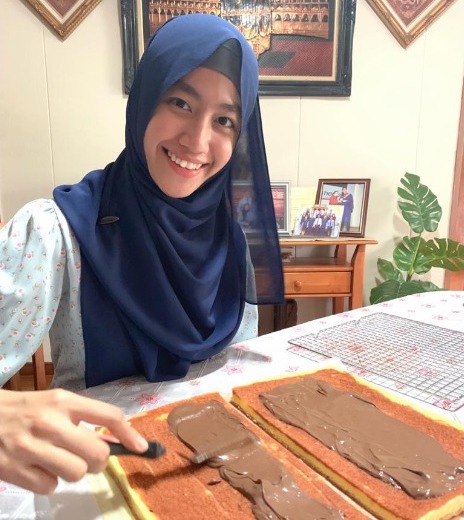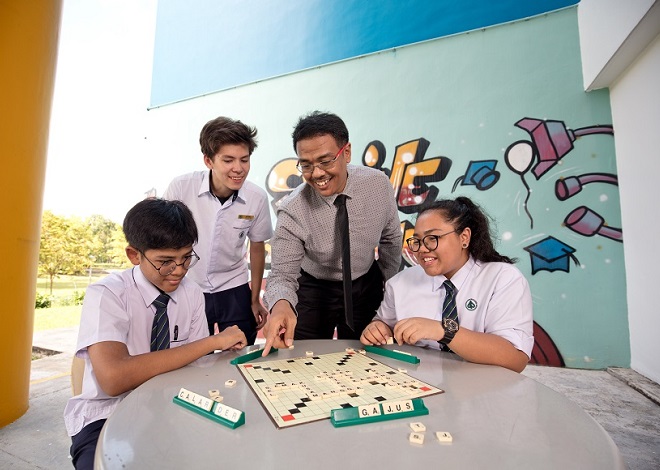For Ms Nur Syafiqah Binte Eddie Yusof, a new teacher at Sembawang Primary School, designing lessons for Full Home-Based-Learning (FHBL) was challenging yet exciting.
She taught a Primary 1 class, and her students were more dependent on the teacher’s guidance when it came to learning and technology.
This is where the Singapore Learning Designers Circle (SgLDC) Facebook group came in handy with their plethora of lesson ideas.
A Learning Community
Set up in 2017 by MOE’s Educational Technology Division, the SgLDC has more than 15,000 educators from different schools as members, all sharing ideas on teaching with the use of technology.
With the shift to FHBL, the group has naturally been abuzz with activity in the past month. Every day, teachers contribute lesson ideas, ask questions about the Student Learning Space (SLS), and even review different online tools for the benefit of the community.
One particular topic that caught the interest of Ms Syafiqah was that of using games in HBL.
To engage students who may be feeling less motivated when learning from home, a group of teachers were trying to design games based on the concept of “escape rooms”. These games usually require students to solve a series of questions or puzzles to get clues to help them “escape” or win the game. Even though they still require knowledge of the subject at hand, students usually find such lessons more appealing because there is a storyline, more visuals or a sense of achievement when they figure out the puzzle.
Ms Syafiqah was intrigued by the concept, and felt that it was a good way to spark interest for her students.
“It was actually very inspiring to see what other teachers have come up with. One of the teachers designed a treasure hunt where students had to answer different Math questions and input the numbers correctly to unlock a treasure chest. I wanted to build upon what they have shared, but also personalise it according to my class’s interest, to create a fun experience for my students!”
It’s not “One Size Fits All”
Although SgLDC provided the inspiration, Ms Syafiqah still had to consider how to best design the lesson to fit the needs of her students.
For example, although the teachers in the group experimented with and shared a range of tools and platforms like Google Forms, Deck Toys and Flippity for their game-based lessons, she decided to stick to the SLS platform.
It was not for lack of experience in these tools though!
“Because my students are in Primary 1, I wanted to use a platform that they are comfortable with,” she explained. “My priority was to make it easy for them. Also, SLS has a lot of great features that I could use!”
She also took the interests of her students into consideration.
As their form teacher, she conducted weekly check-in activities during FHBL when students share what they have been doing at home. She discovered that quite a few students had a baking session with their families during the circuit breaker. While sharing her own baking experience, she found that many students were interested – in the products, even if not the actual process!
With that in mind, she came up with a simple Math game with lots of yummy visuals to appeal to her students.
In fact, quite a few of the students told her they felt hungry after the lesson!
The Sweetest Math Problem
The game itself was not complicated – students had to help the main character figure out the correct amount of sugar, butter, flour and other ingredients to create a mystery dessert by doing simple addition. Each correct answer gave the student a clue. Putting the clues together at the end formed the name of the mystery dessert – brownies!
What made Ms Syafiqah’s lesson remarkable was how she catered to the needs of her Primary 1 learners. Besides the choice of platform and topic, she also made full use of SLS’s different functions to help her students.
For example, to help those who were not yet up to speed in reading, she embedded audio instructions for every question so that they could still follow the lesson.
.jpg) Students could listen to the instructions if they had problems with the written instructions
Students could listen to the instructions if they had problems with the written instructions
She also included positive messages to motivate students who got the answer wrong. They could re-attempt the question to get the clue!

A note of encouragement for those who got the answer wrong, and a clue for those who got it right!
After solving the addition questions, students put the letters together and were rewarded (virtually) with a picture of the mystery dessert. A satisfying end to a Math lesson indeed!
As one student wrote in the feedback section, “It was fun to solve and find the missing numbers [in the recipe]. Brownies are my FAVOURITE dessert and now I want to make some!”
Feedback and Giving Back
Having conducted a successful game-based lesson, Ms Syafiqah shared her lesson in the SgLDC group, and soon received many requests for her lesson template. To date, she has shared a copy of her lesson with more than 60 teachers on the SLS platform. The lesson has also been put up on the Community Gallery on SLS for other teachers to adapt and customise for their own students.
“I’m humbled to know that others found my lesson useful,” she shared. “Just as I have benefitted from their sharing, I hope to contribute back to the community as well.”
She also found the platform to be useful for feedback.
A fellow educator pointed out that “Try again, you can do it” may be encouraging, but it does not help students to figure out why they were wrong in the first place. They may just try to guess the answer instead – which is not very helpful for their learning.
Ms Syafiqah said, “I saw the comment and thought it made a lot of sense. I am glad there are more experienced teachers in the group who shared tips that I could use right away to improve on my lesson!”
Based on the suggestion, Ms Syafiqah included hints to guide students when they got the wrong answer in her next game-based lesson.
As FHBL came to an end, she felt that the experience had taught her a lot.
“In baking, as in teaching, we may start with a basic recipe in mind,” she reflected, “but we should not be afraid to tweak and adjust it to our needs. I have learnt to put myself in the shoes of my students and create content that they will enjoy.”





.jpg)
